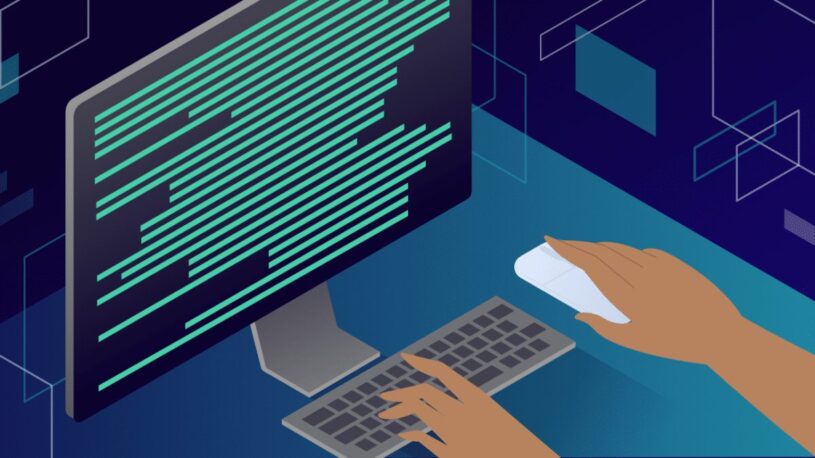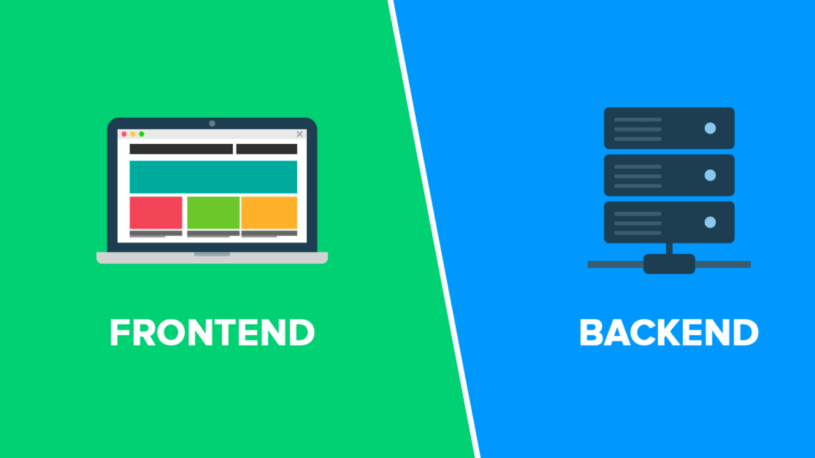At the core of every dynamic website lies a division of labor, a harmony between two fundamental aspects: the frontend and the backend. Picture a well-designed stage with actors delivering captivating performances. While the audience admires the set, costumes, and dialogues (the frontend), behind the curtains, a crew ensures the show runs smoothly (the backend). This collaboration not only brings a website to life but also determines how users interact with it.
As we delve into this article, we’ll uncover what a frontend and backend developer is, and the roles, responsibilities, and languages they employ, and what the features of a good frontend & backend development company are. Whether you’re seeking to build a website from the ground up or enhance its performance, gaining insights into these development realms will serve as a sturdy foundation. So, let’s embark on this enlightening journey to understand the intricate interplay between the user-facing frontend and the robust backend that powers the web.
The Art of Frontend — Where Users Meet the Web
Frontend development, often referred to as “client-side development,” is the facet of web creation that focuses on what users see and interact with. It’s the art and science of bringing web designs to life, translating a designer’s vision into a functional, user-friendly website interface.
Languages and Tools

At the heart of frontend development are three essential languages:
- HTML (HyperText Markup Language). This foundational language provides the structure of a website, much like the skeleton of a building.
- CSS (Cascading Style Sheets). Think of CSS as the aesthetic architect, allowing developers to style and layout web pages, influencing everything from colors to fonts to responsive design.
- JavaScript. The dynamo behind interactive elements on a website. Whether it’s a live chat pop-up, a slideshow, or a responsive menu, JavaScript is the program that makes websites interactive and dynamic.
In addition to these core languages, frameworks like Flutter have gained traction, offering developers a suite of tools and components to expedite the development process and enhance website functionality.
Necessary Skills
Beyond a mastery of the aforementioned languages, a frontend developer needs a keen eye for design and user experience (UX). It’s not enough to merely code; understanding the user’s journey, ensuring websites are accessible and intuitive, and optimizing for mobile and other devices are all paramount in this role.
Interaction with the Backend
While frontend deals with the visible part of the iceberg, backend development handles what’s beneath the surface. The frontend submits user requests to the backend, like when you fill out a form or click a ‘buy now’ button. The backend processes this data, interacts with the database if needed, and sends a response back to the frontend, which then displays the relevant outcome to the user. This seamless interaction ensures that websites not only look good but function efficiently, delivering a holistic user experience.
In essence, frontend development is the bridge between a website’s aesthetics and its functionality. It’s where technical prowess meets design sensibility, ensuring that users have an engaging and smooth web experience.
The Backend — Powering the Web Behind the Scenes

Backend development, frequently termed as “server-side development,” operates discreetly behind the curtains. It’s responsible for the logic, data storage, and overall performance that ensure a website or application functions seamlessly. While frontend takes care of the visual aspects, the backend is where the actual processing takes place, laying the foundation for every user’s experience.
Languages and Tools
Numerous languages can be employed for backend development, each with its unique features and advantages:
- Python: Renowned for its simplicity and readability, Python has been a favorite for many web-based applications. Frameworks like Django further simplify the development process.
- Java: A versatile, object-oriented language that powers countless applications and websites, Java’s robustness and portability make it a staple in backend development.
- PHP, Ruby, Node.js: These are other widely used languages, each offering various frameworks and libraries to aid in backend development.
Necessary Skills
Backend developers need a strong grasp of databases, as storing, retrieving, and ensuring the security of data is a critical component of their job. Understanding server management, ensuring website scalability, and having expertise in APIs (Application Programming Interfaces) are also essential. Moreover, problem-solving skills and an analytical mindset play a pivotal role, given the complexity and challenges of server-side programming.
Interaction with the Frontend

The frontend and backend maintain a symbiotic relationship. Whenever a user action requires processing (like logging in or placing an order), the frontend sends a request to the backend. The backend, upon receiving this, interacts with the database, processes the request, and then sends back the desired data or confirmation to the frontend. This interaction happens in real time, ensuring users get instantaneous feedback or results.
In a nutshell, backend development is the unsung hero of the web world. While it remains unseen by users, its smooth operation and efficiency dictate the overall functionality and reliability of a website or application. Together with frontend, the backend ensures a harmonious, swift, and secure web experience for every user.
Conclusion
The digital tapestry of the web is intricately woven with the threads of both frontend and backend development. While the frontend dazzles with visual artistry, bringing user interfaces to life, the backend is the silent powerhouse, ensuring every click, every action is processed with precision. To truly grasp what is frontend and backend development is to understand the harmonious collaboration that gives birth to our daily digital experiences.
At Evrone, we recognize the pivotal roles both these spheres play, and our commitment is to build applications and websites that resonate with this synergy. After all, in the vast orchestra of web development, both frontend and backend developers are indispensable maestros, conducting a symphony of seamless interactions.
If you are interested in learning programming and like this topic, check out our guide and discover how online programming courses can help you on your learning journey. Happy coding!
